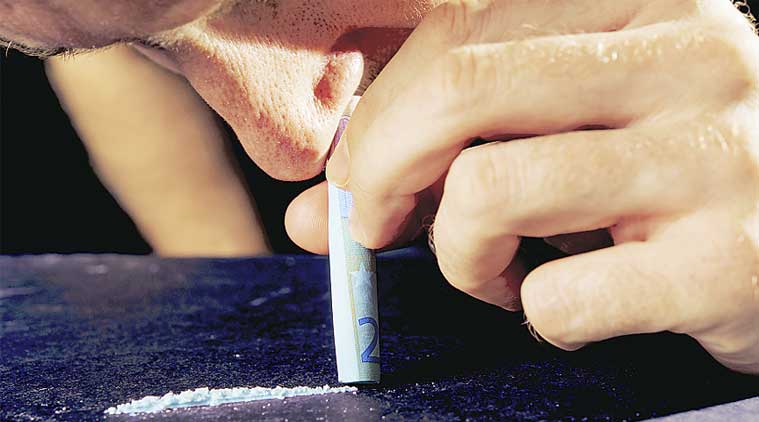Volunteers working for a revived anti-narcotics cell has rounded up huge bulks of Heroin, which is estimated to simultaneously intoxicate 1.5 lakh people in Aizawl.

By Adam Halliday
Aizawl, May 6 : Volunteers working for a revived anti-narcotics cell has rounded up
huge bulks of Heroin, which is estimated to simultaneously intoxicate
1.5 lakh people in Aizawl. Within three weeks of non-stop operations, it
has also clinched at least 221 drug addicts, peddlers and prostitutes
in the state capital.
R L Zomawia, secretary of the Young Mizo Association’s (YMA) Supply Reduction Service (SRS), which has replaced the national award-winning Central Anti-Drugs Squad after more than a year’s hiatus, said that at least 13 people have been sent to rehabilitation centers with the consent of magistrates while two minors have been handed over to the Child Welfare Committee. A dozen others suspected to be established dealers and peddlers have been handed over to law-enforcement agencies.
“The rest have been made to undergo counselling sessions under trained counselors roped in by the YMA after informing either their families or community leaders of their respective localities,” an SRS leader said.
It is difficult to put an exact number to the amount of heroin and other drugs that have been seized because heroin, locally known as “number four” or “spee”, is sold on the streets stuffed into small containers or vials of different sizes and shapes.
The largest unit, known as “Hawng” makes up between 15-17 grams of the drug, and is sold for about Rs 50,000 or so. Smaller units are known as “Cans” and “Chhin Sen” and these are sold in lower prices.
The SRS has confiscated as many as 19 “hawng”, 116.5 “cans” and two “Chhin Sen” since it began operations on April 11.
“The drive was launched because of a visibly increasing amount of drug-peddling, addicts and addiction in streets corners in Aizawl’s central regions,” SRS leaders said. They added that a decrease in prices has also been gauged from what addicts have narrated about their experiences.
Lalremruata Chhakchhuak, who works as a coordinator with the Synod Hospital’s Grace drop-in centre, estimates upto 30,000 people are into some kind of substance abuse the state, which has a population of just 11 lakh people. Chhakchhuak says more than 12,000 people are being treated at rehabilitation centres across Mizoram, most of them hooked to opiates, the same base substance heroin is made from.
The drop in heroin prices has been estimated at about 25 to 30 percent from two years ago, since one “hawng” used to cost about Rs 80,000 then, according to a former volunteer who worked with the SRS’s predecessor CADS.
Pure heroin has made a comeback in Mizoram after Central rules a few years ago stopped the manufacturing of opiate-based pharmaceutical drugs which were usually popped or injected by addicts for years, even decades.
R L Zomawia, secretary of the Young Mizo Association’s (YMA) Supply Reduction Service (SRS), which has replaced the national award-winning Central Anti-Drugs Squad after more than a year’s hiatus, said that at least 13 people have been sent to rehabilitation centers with the consent of magistrates while two minors have been handed over to the Child Welfare Committee. A dozen others suspected to be established dealers and peddlers have been handed over to law-enforcement agencies.
“The rest have been made to undergo counselling sessions under trained counselors roped in by the YMA after informing either their families or community leaders of their respective localities,” an SRS leader said.
It is difficult to put an exact number to the amount of heroin and other drugs that have been seized because heroin, locally known as “number four” or “spee”, is sold on the streets stuffed into small containers or vials of different sizes and shapes.
The largest unit, known as “Hawng” makes up between 15-17 grams of the drug, and is sold for about Rs 50,000 or so. Smaller units are known as “Cans” and “Chhin Sen” and these are sold in lower prices.
The SRS has confiscated as many as 19 “hawng”, 116.5 “cans” and two “Chhin Sen” since it began operations on April 11.
“The drive was launched because of a visibly increasing amount of drug-peddling, addicts and addiction in streets corners in Aizawl’s central regions,” SRS leaders said. They added that a decrease in prices has also been gauged from what addicts have narrated about their experiences.
Lalremruata Chhakchhuak, who works as a coordinator with the Synod Hospital’s Grace drop-in centre, estimates upto 30,000 people are into some kind of substance abuse the state, which has a population of just 11 lakh people. Chhakchhuak says more than 12,000 people are being treated at rehabilitation centres across Mizoram, most of them hooked to opiates, the same base substance heroin is made from.
The drop in heroin prices has been estimated at about 25 to 30 percent from two years ago, since one “hawng” used to cost about Rs 80,000 then, according to a former volunteer who worked with the SRS’s predecessor CADS.
Pure heroin has made a comeback in Mizoram after Central rules a few years ago stopped the manufacturing of opiate-based pharmaceutical drugs which were usually popped or injected by addicts for years, even decades.







0 comments:
Post a Comment